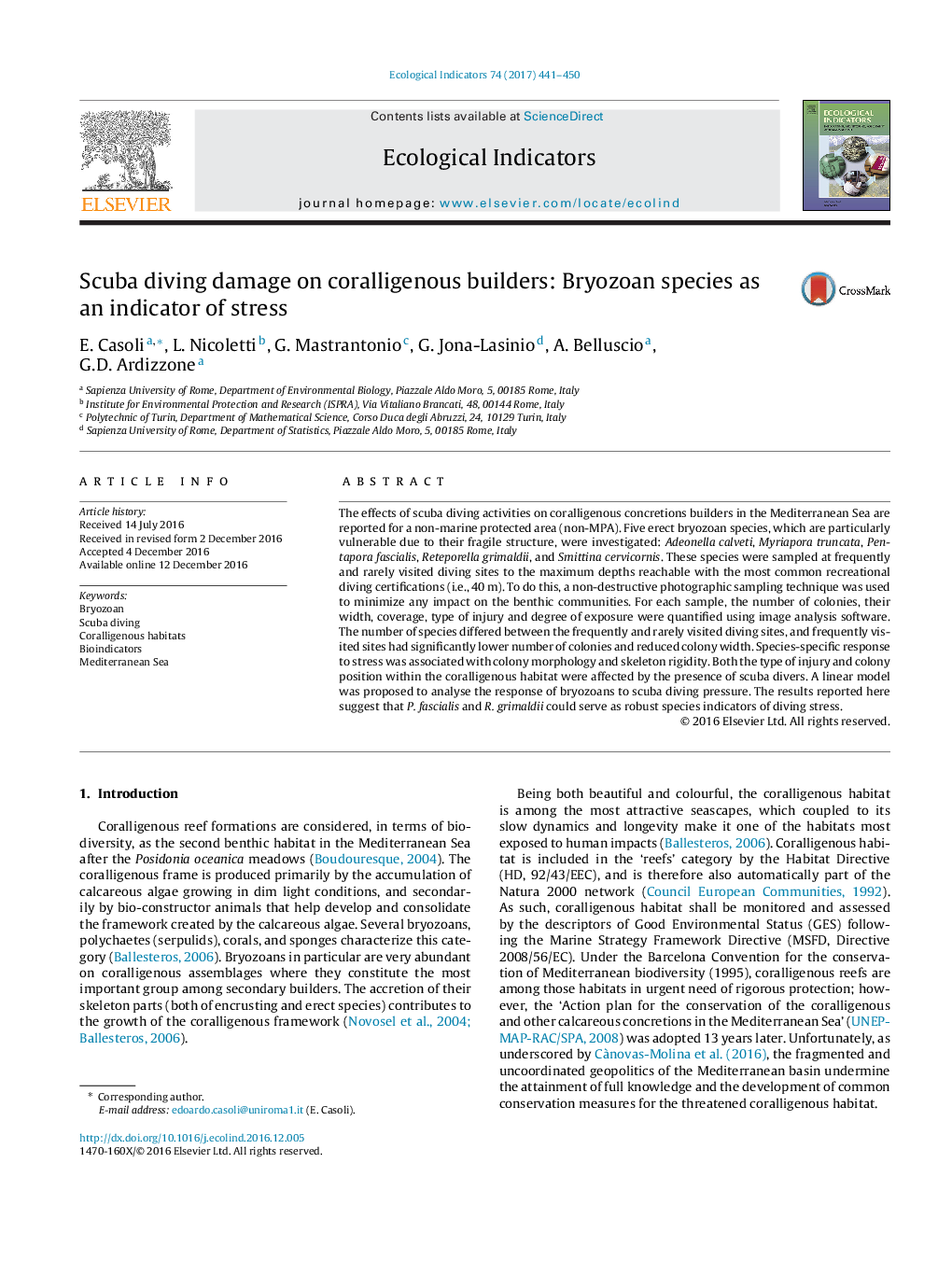| Article ID | Journal | Published Year | Pages | File Type |
|---|---|---|---|---|
| 5741870 | Ecological Indicators | 2017 | 10 Pages |
The effects of scuba diving activities on coralligenous concretions builders in the Mediterranean Sea are reported for a non-marine protected area (non-MPA). Five erect bryozoan species, which are particularly vulnerable due to their fragile structure, were investigated: Adeonella calveti, Myriapora truncata, Pentapora fascialis, Reteporella grimaldii, and Smittina cervicornis. These species were sampled at frequently and rarely visited diving sites to the maximum depths reachable with the most common recreational diving certifications (i.e., 40Â m). To do this, a non-destructive photographic sampling technique was used to minimize any impact on the benthic communities. For each sample, the number of colonies, their width, coverage, type of injury and degree of exposure were quantified using image analysis software. The number of species differed between the frequently and rarely visited diving sites, and frequently visited sites had significantly lower number of colonies and reduced colony width. Species-specific response to stress was associated with colony morphology and skeleton rigidity. Both the type of injury and colony position within the coralligenous habitat were affected by the presence of scuba divers. A linear model was proposed to analyse the response of bryozoans to scuba diving pressure. The results reported here suggest that P. fascialis and R. grimaldii could serve as robust species indicators of diving stress.
